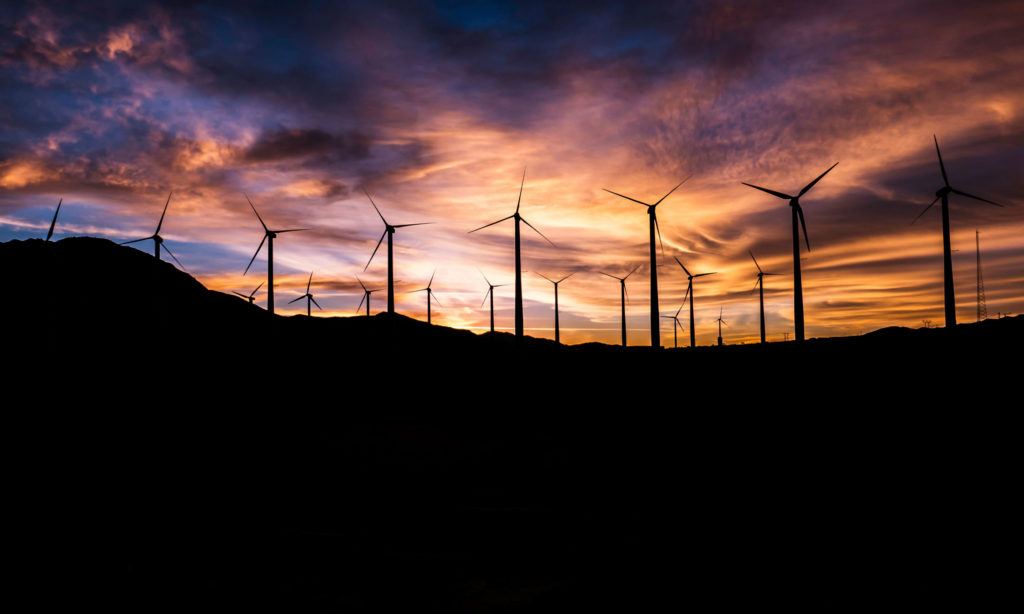What is a carbon offset?
A carbon offset is a credit for greenhouse gas reductions achieved by one party that can be purchased and used to compensate (offset) the emissions of another party. Carbon offsets are typically measured in tonnes of CO2-equivalents (or CO2e) and are bought and sold through a number of international brokers, online retailers and trading platforms.
For example, wind energy companies often sell carbon offsets. The wind energy company benefits because the carbon offsets it sells make such projects more economically viable. The buyers of the offsets benefit because they can claim that their purchase resulted in new non-polluting energy, which they can use to mitigate their own greenhouse gas emissions. The buyers may also save money as it may be less expensive for them to purchase offsets than to eliminate their own emissions.
Many types of activities can generate carbon offsets. Renewable energy such as the wind farm example above, or installations of solar, small hydro, geothermal and biomass energy can all create carbon offsets by displacing fossil fuels. Other types of offsets available for sale on the market include those resulting from energy-efficiency projects, methane capture from landfills or livestock, destruction of potent greenhouse gases such as halocarbons, and carbon-sequestration projects (through reforestation, or agriculture) that absorb carbon dioxide from the atmosphere.
Why some carbon offsets are better than others
As with any purchase, buyers need to choose their offsets carefully, particularly as the voluntary offset market is largely unregulated.
One issue to consider is the offset project type. For example, although quite popular, offsets from tree-planting projects are problematic for a number of reasons, including their lack of permanence and the fact that these projects do not address our dependence on fossil fuels. Similarly, offset projects involving the destruction of halocarbon gases such as HFC-23 have been subject to numerous criticisms, including the fact that they actually result in a perverse incentive (because of the sheer volume of offsets—and profits—that they generate) for more of the ozone-depleting gas to be created. The price of offsets from these projects is also so low (due to the very high global warming potential of the gas) that they tend to flood the market and squeeze out more sustainable offset projects, like solar and wind.
Another important issue to consider when purchasing offsets is “additionality”. An offset project is considered additional if it isn’t business as usual. Typically, this means that the project wouldn’t have happened without the extra funding from the sale of offsets. Additionality is extremely important, as the entire concept of offsetting—i.e., purchasing greenhouse gas reduction credits from a project elsewhere—is based on the premise that those reductions wouldn’t have happened otherwise. Only by buying offsets that have met additionality criteria can you be assured that your purchase is resulting in a net benefit for the climate.
Other criteria of high-quality carbon offsets include: validation and verification of the project by reputable third-parties; steps by the project developer to ensure that each offset is only sold once (e.g., by listing the offsets on a public registry); and systems in place to control “leakage”, where the creation of a GHG reduction in one region causes an unintended increase in GHG emissions somewhere else (for example, protecting a forest in one location could simply shift logging to a forested area in a new location).
The David Suzuki Foundation and the Pembina Institute have prepared a guide, Purchasing Carbon Offsets, to help Canadian consumers, businesses and organizations assess the quality of carbon offsets and the vendors that sell them. The following are some questions potential buyers can ask offset vendors:
Standards for carbon offsets
Because it can be difficult for offset buyers to get clear answers to each of the above questions, a good way to ensure that your offset purchase is making a positive contribution to the climate is to purchase offsets that meet recognized standards. Just as consumers can feel confident when purchasing food products that meet strict third-party standards for organic agriculture, standards for carbon offsets provide assurance that certain criteria are met when the offset is developed and sold.
A number of standards exist for carbon offsets, including the VCS, Green-e, and The Gold Standard. More standards are being announced regularly, and WWF has published a comparison of the most common offset standards. Each of these standards differs in key ways, with some being more rigorous than others.
The Gold Standard for carbon offsets
The Gold Standard is widely considered to be the highest standard in the world for carbon offsets. It ensures that key environmental criteria have been met by offset projects that carry its label. Significantly, only offsets from energy efficiency and renewable-energy projects qualify for the Gold Standard, as these projects encourage a shift away from fossil-fuel use and carry inherently low environmental risks. Tree-planting projects are explicitly excluded by The Gold Standard.
First, Gold Standard projects must meet very high additionality criteria to ensure that they contribute to the adoption of additional sustainable-energy projects, rather than simply funding existing projects. The Gold Standard also includes social and environmental indicators to ensure the offset project contributes to sustainable development goals in the country where the project is based. Finally, all Gold Standard projects have been independently verified by a third party to ensure integrity.
Currently, The Gold Standard is restricted to offset projects in countries that don’t have emission reduction targets under the Kyoto Protocol, primarily developing countries. Supporting offset projects that meet The Gold Standard therefore helps these countries leapfrog developed countries technologically so they don’t go down the same fossil-fuel path, which would be disastrous for the climate.
The Gold Standard is supported by more than 80 nongovernmental organizations worldwide including WWF International, Greenpeace International, the Pembina Institute, and the David Suzuki Foundation.


Comments
Post a Comment